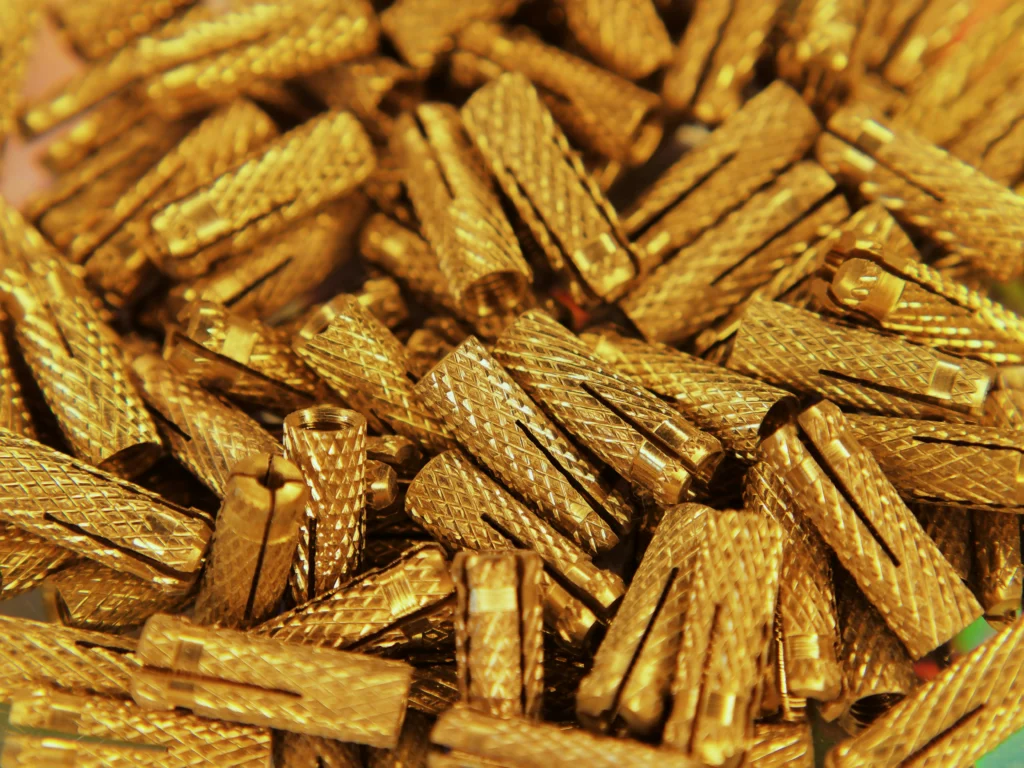Brass, an alloy of copper and zinc, is one of the most commonly chosen nonferrous metals in CNC machining. It is valued for its ease of machining, corrosion resistance and attractive surface appearance. Thanks to these properties, it is used in fittings, electrical parts, precision components or decorative details.
The importance of brass in industrial production is due not only to its functional properties, but also to the economy of the process – in many cases, it makes it possible to achieve high quality parts with relatively short processing times.
In this article, we will introduce the properties of brass relevant to CNC machining, discuss the most common grades of this alloy, and suggest, based on our more than 45 years of experience, how to approach turning, milling, drilling or tapping for optimal results.
Table of contents

Brass and CNC machining
In metal CNC machining, brass stands out from many others. Its thermal conductivity reduces the risk of tool overheating, and its relatively low hardness makes for a smooth process. This makes it possible to use high cutting speeds and achieve very smooth surfaces without additional polishing.
It is these features that make CNC turning and milling of brass one of the particularly cost-effective processes. Appropriately selected cutting parameters allow rapid removal of excess material while maintaining high surface quality.
The most common grades of brass
Several key varieties of brass are encountered in industrial practice:
- C36000 / CW614N (lead free-cutting brass) – considered the “gold standard” of CNC machining. The addition of lead makes the material easy to cut, the chip is short and well-broken, and the tools remain durable even at high speeds.
- CW617N – casting and forging brass. Its machinability is inferior to CW614N, and the chips are sometimes longer. It is mainly used in plumbing fixtures and sanitary components.
- ECOBRASS (C69300, CW724R) – lead-free grades, introduced in response to environmental requirements. They require sharper tools, lower speeds and higher feed rates to break chips effectively. Although more difficult to machine, they are increasingly chosen in the food or medical industries.
Knowing these differences can help you avoid mistakes and optimize your cutting process.
CNC turning and milling of brass – what is worth knowing?
Turning brass is one of the basic operations in CNC machining of this alloy. In order for the process to be stable and give high surface quality, it is used:
- Sharp, positive turning insert geometries,
- wiper-type inserts, which improve roughness without compromising productivity,
- Short and rigid toolholders – long overhangs can cause vibration and thus poorer finish quality.
Brass milling is also one of the very efficient processes, provided the right choice of tools is made:
- The best results are obtained by using cutters with polished edges, intended.
- A climb milling (counter milling) strategy is recommended to reduce edge burr formation.
- In high-volume production, PCD tools are worth considering – they provide long life and an almost “mirror-like” surface finish.

Drilling and tapping brass
Drilling in brass has a peculiar difficulty – in some grades, especially soft and ductile ones, there is a phenomenon colloquially called “drill retraction”.
This means that instead of stable cutting, the tool is sucked deep into the material, leading to too rapid deepening of the hole, loss of control over the process and even breaking the drill bit.
To prevent this, drills with modified geometries – with zero or slightly negative rake angle edges – are used. This ensures that the tool actually cuts the material, rather than “pulling” deep into the hole. The result is a stable process and better hole quality.
Brass threading goes smoothly, as long as the tools are well matched to the type of hole and alloy:
- Through-holes (passing through the workpiece) – gun tap (also known as spiral-point) taps work best, as they push the chip forward, i.e. deep into the hole, which prevents clogging of the thread,
- Blind holes (ending inside the material, with a bottom) – spiral taps are used, whose grooves pull the chip upward, outside the hole,
- Lead-free brasses – it is often advantageous to use forming threaders, which do not cut the material, but shape the thread plastically. This eliminates the chip problem and further strengthens the threaded connection.
Cooling and lubrication during CNC machining of brass
For lead grades, dry machining or machining with minimum lubrication (MQL) is possible. Due to short chips and high thermal conductivity, excessive tool heating does not occur.
The situation is different for lead-free alloys, which have poorer thermal conductivity. In their machining, it is crucial to use emulsion or oil cooling, which significantly extends tool life and improves surface quality.
Health and safety aspects in brass machining
For lead grades such as CW614N, it is important to be aware of health hazards.
While the lead present in the alloy improves machinability, it is also a toxic agent. Dust and fine particles generated during machining can be inhaled or transferred to the body through hand contact.
Prolonged exposure to lead is associated with the risk of nervous system disorders, circulatory problems or kidney damage.
Therefore, brass processing plants should use:
- Dust and oil mist extraction systems,
- Cleaning of workstations by wet methods (instead of compressed air),
- Personal protective equipment (masks, gloves),
- strict hygiene rules – including a ban on eating in the processing zone.
In the case of lead-free brasses, this risk is virtually eliminated.
Summary
CNC machining of brass is one of the efficient and relatively easy processes, but each grade of material requires an individual approach.
Leaded brasses provide exceptional machinability, while lead-free grades require parameter modification and cooling, but are environmentally and health safer.
Choosing the right tools, cutting parameters and cooling system produces precision parts with high surface quality, making brass one of the key materials in modern industrial manufacturing.
